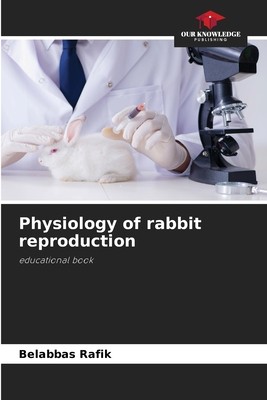
- We will send in 10–14 business days.
- Author: Belabbas Rafik
- Publisher: Our Knowledge Publishing
- ISBN-10: 6207789830
- ISBN-13: 9786207789832
- Format: 15.2 x 22.9 x 0.3 cm, softcover
- Language: English
- SAVE -10% with code: EXTRA
Reviews
Description
The domestic rabbit (Oryctolagus cuniculus) is both a laboratory animal and a production animal (meat, fur or hair). The rabbit is highly prolific, with short gestation and lactation periods, and a production rate of up to 61 kg per female rabbit per year. Rabbits grow quickly, and their meat is highly nutritious (low in fat and cholesterol, but high in protein). All these characteristics make the rabbit a very interesting zootechnical species. Moreover, rabbit reproduction is a crucial stage in the creation of new breeds, the transmission of genetic progress and, above all, the success of breeding. The way rabbits are bred has evolved considerably, particularly since the early 1990s, when artificial insemination began to be used by breeders, especially in Europe. Artificial insemination has helped to change the way breeding is organized on farms, insofar as it has enabled the development of single-band breeding.
EXTRA 10 % discount with code: EXTRA
The promotion ends in 18d.13:01:47
The discount code is valid when purchasing from 10 €. Discounts do not stack.
- Author: Belabbas Rafik
- Publisher: Our Knowledge Publishing
- ISBN-10: 6207789830
- ISBN-13: 9786207789832
- Format: 15.2 x 22.9 x 0.3 cm, softcover
- Language: English English
The domestic rabbit (Oryctolagus cuniculus) is both a laboratory animal and a production animal (meat, fur or hair). The rabbit is highly prolific, with short gestation and lactation periods, and a production rate of up to 61 kg per female rabbit per year. Rabbits grow quickly, and their meat is highly nutritious (low in fat and cholesterol, but high in protein). All these characteristics make the rabbit a very interesting zootechnical species. Moreover, rabbit reproduction is a crucial stage in the creation of new breeds, the transmission of genetic progress and, above all, the success of breeding. The way rabbits are bred has evolved considerably, particularly since the early 1990s, when artificial insemination began to be used by breeders, especially in Europe. Artificial insemination has helped to change the way breeding is organized on farms, insofar as it has enabled the development of single-band breeding.


Reviews